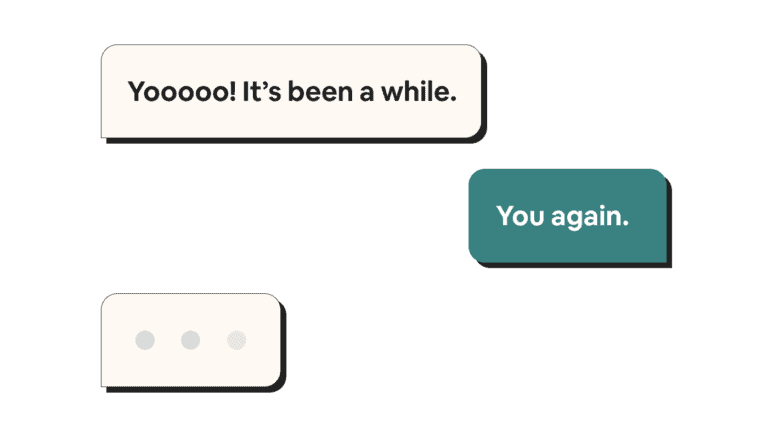Unless you have been living under a rock, you have most likely heard of the term “freelance economy” — which currently makes up 35% of the U.S. workforce and is projected to reach 50.9% by 2027.
Online freelance marketplaces for high-skilled workers, such as Upwork (recently IPO’ed) and Freelancer.com, have been key players in shaping the freelance ecosystem. They will certainly not miss the opportunities ahead. As new platforms emerge and old ones try to stay in the game, we‘ll likely see a new wave of innovation in this space within the next 2–3 years.
As a former product manager at Codementor, a freelance and 1-on-1 mentorship marketplace for software developers, I’d love to share some personal observations and predictions about this rapidly-growing space.
Freelance marketplace explained
Let’s first look at the key functions of a freelance marketplace. Feel free to skip this section if you are already familiar with them.

Sourcing & Vetting
Immediate access to a large pool of clients is the No.1 reason why 73% of freelancers look for work via online marketplaces. This simply wouldn’t be possible without the sourcing and vetting functions of a platform.
Sourcing refers to the user acquisition effort a platform dedicates to increase its overall supply and demand pools, whereas vetting refers to the mechanism a platform has set up to ensure a basic level of quality among its users, such as skill tests and background checks.
Matching
However, having an abundance of supply and demand is useless if clients cannot quickly find suitable freelancers for their projects. This is where a platform’s matching function comes in. The ability to efficiently connect the two sides sets good platforms apart from the bad ones. It involves a tremendous amount of behind-the-scenes work users don’t see.
To give you an example, back when I was working on CodementorX, a platform for companies to hire elite freelance developers, each request would go through four matching steps:
- A phone call between hiring consultant and client to gather requirements
- ML-based algorithm to rank freelancers by structured data such as expertise, availability, timezone, hourly rate, etc
- Dedicated matcher to shortlist three candidates based on qualitative factors, including soft skills, personality, work experience, etc
- Hiring consultant to facilitate interviews between client and candidates
This process has proven to cut down the average hiring time for a senior freelance developer from 4–8 weeks to less than two weeks.
But here is a problem — the value of a platform’s matching function depreciates over time for quality freelancers and clients. The longer they stay in the ecosystem, the easier it is for them to find each other through referral. This is the reason a platform must provide value beyond merely connecting freelancers and clients to maximize their LTV.
Engagement Facilitation
Over 90% of freelance marketplaces generate revenue by taking a cut (typically between 10–25%) of transactions occur on their platforms. Therefore, they better give users strong incentives not to circumvent them other than a hefty penalty. Offering SaaS tools and simplified logistics to facilitate ongoing engagements is one way of doing so.
Generally, working through a platform cuts down the hassles clients and freelancers must deal with in terms of paperwork and payment, especially when an engagement is cross-border. It can also provide a certain degree of protection in case of dispute.
But are these really enough to prevent circumvention?
The answer: It depends. You have to consider factors such as project size, the cost of alternative solutions, and the trust between the client and freelancer. In my experience, large companies using freelancers for short-term projects usually benefit the most from working through a platform due to the logistical convenience.
Observations
Now, let’s dive into some interesting observations I’ve made in the past two years.
1. Growing focus on enterprise clients
The Intuit 2020 Report estimated that 80% of large corporations plan to increase the use of freelancers in the coming years. Accenture also pointed out that 20% of Fortune 500 companies are already using Upwork (likely more if you count other platforms) to prepare themselves for the workforce transformation.
The trend is well-supported by the increasing number of freelance platforms and services targeting enterprise clients in the past few years, such as the launches of Upwork Enterprise and Upwork Pro in 2016. These services were born for an obvious reason — enterprise clients pay more. A lot more.
In Upwork’s case, 10% of its $121.9 million revenue in the first half of 2018 came from a single client — a budget only obtainable by enterprise clients.
Whereas SMBs hire freelancers for a variety of reasons, enterprise companies typically hire freelancers for one-off or experimental projects that require highly-specialized skills. They are happy to pay high rates if the freelancers are top-notch. If you consider the time, resources, opportunity cost, and associated risks it involves to hire a senior full-time employee at a large company, a $150–300 hourly rate is like pocket change in comparison.
However, simply offering top-tier talents is not enough. Enterprise clients also expect platforms to deliver exceptional white-glove services to justify the premium price tag. Currently, platforms targeting enterprise clients can roughly be divided into two categories:
Full-service Model — focusing on completing deliverables. Responsible for the entire lifecycle of a project.
- Examples: Gigster (pivoted to focus on enterprises in 2017), Crew(acquired by Dribble), Paro, Contently, Povio, Rev
Temp Agency Model — focusing on providing the best talents available. Minimal involvement in deliverables.
- Examples: Toptal, CodementorX, Upwork Pro, ScalablePath, Credo, X-Team

As lucrative as the enterprise market seems, outdated corporate practices are still a major challenge platforms need to overcome. Most companies do not have a proper system set up to work with freelancers. For example, should a freelance platform be considered an individual contractor or a vendor? The categorization will dictate payment terms, billing method, and legal liability. Neither category seems ideal. Platforms must develop business processes and product features to accommodate these issues if they want to have a bigger piece of the enterprise market.
2. The four horsemen of a chaotic ecosystem
Will freelancing overtake traditional employment by 2027 as projected? Very unlikely in its current state.
Sadly, the world of freelancing is still a chaotic place. For every successful engagement, there will be three failed ones due to late payments, freelancers going MIA, and contract disputes. These problems, however, are purely the “symptoms” of four underlying challenges:
- Lack of Regulation: Other than the Freelance Isn’t Free Act introduced by New York City in 2017, legislation designed specifically for freelance work is virtually nonexistent. Although all freelance marketplaces have basic rules in place, they are rarely comprehensive enough to be effective.
- Low Barriers to Entry: Unlike the traditional job market, freelance marketplaces open their doors to a much wider range of demographics and use cases. The low barriers to entry allow scammers, unqualified users, and wantrepreneurs to participate in the market more easily.
- Borderless Market: While freelancing doesn’t necessarily equal remote work, jobs in most popular categories — software development, design, content marketing — can easily be done without a physical presence. The removal of geopolitical restrictions has introduced a new set of challenges, such as contract enforcement (or lack thereof), cultural misunderstanding, and bidding wars between freelancers in developed and developing economies.
- Subjective Success: Unlike ordering food delivery, which you can determine success by looking at whether the correct order is delivered promptly, the success of a freelance project is often subjective. When success cannot be defined objectively, disputes will naturally ensue.
Enjoying this post so far? Subscribe for more.
Predictions
So, what’s next for high-skilled freelance marketplaces? Here are my predictions.
1. Platforms will take a bigger role in educating the market, especially the supply side
It would be an understatement to say the freelance market is ill-informed, considering even the most seasoned participants can be clueless when it comes to topics like:
- How much should I pay/charge for expertise?
- How to increase my chance of hiring a good freelancer/getting hired?
- How to evaluate a potential freelancer/client?
- What to discuss and agree on before an engagement goes live?
- How to prevent and resolve disputes?
This presents a considerable opportunity for platforms to improve their lower-funnel metrics by equipping users with information. Users can expect to see more educational initiatives being embedded as part of the product experience. For examples:
- A mandatory Freelancing 101 course during onboarding.
- Pricing guidance — “Your rate is higher than 80% of freelancers with # years of expertise located in location” or “Projects with similar requirements typically cost between $5k-8k.”
- Webinars on market trends, interview tips, and remote work.
The impact of education will be particularly felt on the supply side. While freelancers are experts in their own fields, many underestimate the business skills required to engage with clients. By offering best practices and skills training, platforms will increase freelancers’ hireability, resulting in higher conversion and engagement success rates.
2. Verticalized platforms will beat the competitions
We’ve all witnessed the rise of vertical-specific marketplaces for simple B2C services, such as Uber and Instacart, since the early 2010s. By crafting a seamless product experience for their respective verticals, these platforms managed to either 1) overthrow their Craigslist-like predecessors — or — 2) digitalize services previously unavailable.
I predict the same trend will happen among freelance marketplaces.
For a general freelance marketplace, creating a verticalized experience for each job category is not only a costly investment but also an operational nightmare. In contrast, since a vertical-specific marketplace serves only one job category, it can afford to build job-specific features, hence creating a superior user experience. For example, a platform focusing on software development might build a code editor for clients to conduct live coding interviews.
However, the execution is easier said than done due to the complex nature of high-skilled freelance jobs. When using a ride-hailing service, there are only a few variables: pick-up location, drop-off location, and vehicle type, whereas hiring a software developer involves countless variables: expertise, project details, engagement length, hiring timeline, industry, etc. A one-size-fits-all experience is doomed to be mediocre. Each platform must further segment its vertical and prioritize for the most valuable (both strategically and monetarily) use cases.
At the end of the day, it’s all about serving one niche better than everyone else. Platforms that can do so will have a better shot at achieving defensibility and scalability.
3. Increasingly-integrated ecosystem and the rise of market networks
Beside freelance marketplaces, there are many more components that make up the freelance ecosystem. To name a few:
- Freelancer Management System: Kalo, Shortlist, WorkMarket
- Full-stack Freelancing Solution: AND CO (by Fiverr), Bonsai
- Payment: Stripe, Transferwise, Payoneer
- Invoicing & Accounting: Wave, Zoho Invoice, FreshBooks
- Time Tracking: Toggl, Harvest, HubStaff, TopTracker (by Toptal)
- Background Check: Checkr
- Dispute Resolution: FairClaims
- Skill Assessment: Codility, HireVue Assessments
- Training & Education: Lessonly, Looop
- Liability Insurance: Dinghy, Hiscox
As companies and high-skilled workers adopt freelancing as a formal practice, new products and services targeting the freelance economy will continue to surface. Since these services complement each other, it makes sense for them to build mutually beneficial integrations to accelerate growth.

For instance, imagine creating a job in a freelancer management system, cross-post the job to multiple freelance marketplaces with just one click, and review all applications within the same system. Not only will the integration offer marketplaces an additional user acquisition channel, but it will also increase the value of the freelance management system in clients’ eyes.
In addition, we might even see the inception of freelance market networks, where freelancers, clients, agencies, and third-party service providers get to interact with each other. Being a market network will amplify a platform’s network effects, diversify its revenue streams, and potentially solve one problem all freelance marketplaces inherently face — the fact that hiring freelancers is a low-frequency use case — by driving more engagement through social or productivity features.
Looking ahead
With Upwork’s IPO, the freelance economy has officially entered a new era. While I doubt freelancing will replace traditional employment anytime soon, if ever, it will inevitably redefine “work” as we know it by enabling a more efficient, on-demand labor model. I’m excited to see how freelance marketplaces will support this transformation and turn “future of work” into a reality.



